10月20日(第3週)高見英樹 氏October 20, 2011 Talk by Hideki Takami
公開日:2011年9月27日
投稿者:sakaguchi
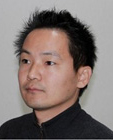
高見英樹 Takami, Hideki
文部科学省大臣官房文教施設企画部
施設助成課課長補佐
学校は公共施設の中でも大きな割合を占める身近な施設であるとともに、次世代を担う子どもたちの学習・生活の場でもあることから、そのエコ化を全国的に進めることにより、広く社会への波及効果が期待できます。本講義では、小・中・高等学校や大学などの学校施設のエコ化をどのように進めていくかについて、国や地方公共団体、大学等の取組を紹介しながら、皆様と議論をしたいと考えています。
2002年に入省後、学校安全や耐震化、教科書検定・採択、国立大学施設の中長期計画の策定などの業務に携わる。2011年4月より現職で、学校施設のエコスクール化などを担当。
一級建築士。
参考資料
- 「東日本大震災の被害を踏まえた学校施設の整備について」緊急提言(平成23年7月 東日本大震災の被害を踏まえた学校施設の整備に関する検討会)
- 「知の拠点 我が国の未来を拓く国立大学法人等施設の整備充実について」(平成23年8月 今後の国立大学法人等施設の整備充実に関する調査研究協力者会議)
参考サイト
高見氏が育児休業の経験をつづった、読売新聞ウェブでの連載記事です。
Mr. Hideki Takami, who belongs to the Ministry of Education, Culture, Sports, Science and Technology, is a member of the Eco-School Program. Eco-School means an ecological school which has some facilities suitable for environmental sustainability and commits ecological activity. In short, he is concerned with making policies to spread Eco-School.
The concept of Eco-School is made up of three important factors. The first is to build facilities which are friendly for both users and the environment. The second is to keep each facility available over the long term by utilizing natural energy technologies and so forth. The last factor is to make use of itself for the environmental education. By the way, why is Eco-School so important? There are three reasons.
 Firstly, it is effective for decreasing CO2 emissions from schools. They consume much energy among public facilities. Second, it is important for spreading the environment-friendly idea. Schools are not only places for pupils to study but also familiar facilities to local people, so schools have a big influence on their attitudes. Lastly, it can lead to a disaster measures. Schools are regularly assigned as emergency evacuation centers. Thus, natural energy, which could be used on occasional blackouts, is important.
Firstly, it is effective for decreasing CO2 emissions from schools. They consume much energy among public facilities. Second, it is important for spreading the environment-friendly idea. Schools are not only places for pupils to study but also familiar facilities to local people, so schools have a big influence on their attitudes. Lastly, it can lead to a disaster measures. Schools are regularly assigned as emergency evacuation centers. Thus, natural energy, which could be used on occasional blackouts, is important.
However, the budget for Eco-School Program is limited because of the severe financial condition these days and that limitation is a large obstacle to the project.
(Report by Saito)
1月12日(第11週)奈尾信英先生紹介January 12, 2012 Talk by Dr. Hideaki Nao
公開日:2011年9月27日
投稿者:sakaguchi
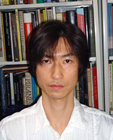
奈尾信英 Nao, Nobuhide
東京大学大学院総合文化研究科講師
今日、都市人口の増加とそれに伴う都市の貧困化は、世界規模で展開しています。われわれが住んでいる都市環境を持続させるためにはどうすればよいのか、本講義を通して考えていきましょう。
1966年、東京生まれ。
東京大学大学院工学系研究科建築学専攻博士課程(建築意匠)修了。博士(工学)。
専門は、建築設計学:都市建築意匠論・都市建築空間史・図学史。
東京大学大学院工学系研究科建築学専攻客員研究員を経て、現在、東京大学大学院総合文化研究科広域科学専攻広域システム科学系情報図形科学部会(図形科学Iおよび図形科学IIを担当)。青山学院大学理工学部、芝浦工業大学工学部、東京電機大学理工学部、東京家政大学家政学部、日本大学生産工学部、国士舘大学21世紀アジア学部、国立東京工業高等専門学校情報工学科、兼任講師。
大学共同利用期間法人人間文化研究機構総合地球環境学研究所研究メンバー。
参照サイト
オランダのサイトを中心に、都市建築に関する参照先を紹介していただきました。
- http://www.oma.nl/
- http://www.unstudio.com/
- http://www.mvrdv.nl/
- http://www.west8.nl/
- http://www.mecanoo.nl/
- http://www.wielaretsarchitects.nl/
About Urban design with Dr. Nao

Our team gathered information about Dr. Nao. He is specialized in architecture in the University of Tokyo, and these days he is engaged in urban design. He wrote a report named “Urbanism Projects of the 90’s.“In this report, he studied urbanization in Rome, Berlin, Paris, and so on. Reading this report, we realized that he valued both artistic design and sustainability.
He has given a message saying that today, the number of people living in cities is increasing and consequently the poverty would get worse in many parts of the world. He invited us to ponder how we can maintain the environment of the growing cities.
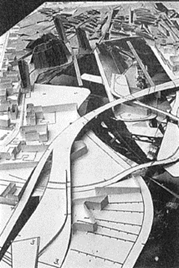
Urban designs which are caring the environment and historical scenery have become more successful in Europe than in Japan, so I would like to compare these several countries in Europe with Japan, and see the circumstances of the cities in the Netherlands, confirming whether the theories I’ve learned can be applied to the real issues in cities.
(Report by Ikeda)
11月10日(第5週)田村正道氏紹介November 10, 2011 Talk by Masamichi Tamura
公開日:2011年9月27日
投稿者:sakaguchi
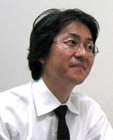
田村正道 Tamura, Masamichi
(株)類設計室 ディレクター
21KOMCEE(理想の教育棟)建設プロジェクトは、東京大学の先生方や職員の皆さん、そして私たち設計者を含め、多くの関係者による協働作業として進められました。21KOMCEE(理想の教育棟)の建築設計にあたっては、「アクティブ・ラーニング」「周辺環境との共存」「ゼロ・エネルギー・ビル」の3つをコンセプトとし、理想の教養教育の場にふさわしい空間デザインと環境技術のあり方を追求してきました。
ゼミ当日は、21KOMCEE(理想の教育棟)建設プロジェクトにおける思考と実現の軌跡を紹介し、それらを通して、人、環境、建築・都市計画の調和のあり方について、その一端をお話できればと思います。現代社会は、地球環境危機と循環型社会への転換、災害への備え、経済危機への対応等、多くの課題を抱えています。建築・環境分野のみならず、あらゆる仕事において、これらの社会的課題に真摯に向き合い、答えを出していくことが求められます。そのためには、自然の摂理に学ぶこと、歴史や先人の経験に学ぶこと、そうした学び続ける姿勢がとても大事なのではないかと感じています。
皆さんとお会いできることを楽しみにしています!
1962年 京都生まれ
1985年 東京芸術大学美術学部建築科卒業
1985年~類設計室、現在、東京設計室ディレクター
主な設計実績
東京大学工学部新2号館、同工学部新3号館
日本大学文理学部新教室棟、同生物資源科学部60周年記念棟
さいたま地家裁熊谷支部庁舎、甲府法務総合庁舎、浦安市立高洲小学校 など
参照文献・Webサイトなど
21KOMCEE(理想の教育棟)掲載誌
- 日経アーキテクチュア特別編集版 これからの学校2011(2011年6月25日発行)
- 日刊建設工業新聞2011年6月20日
類設計室
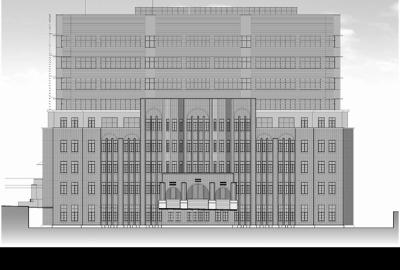 Mr. Masamichi Tamura is an architect of RUI SEKKEISHITSU Co., Ltd., who designed and supervised the construction of the 21 KOMCEE.
Mr. Masamichi Tamura is an architect of RUI SEKKEISHITSU Co., Ltd., who designed and supervised the construction of the 21 KOMCEE.
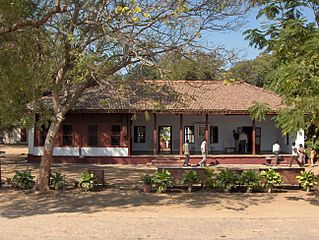
In order to design an ideal building for education, Mr. Tamura sought some hints in the history of universities. At the beginning, an institution for higher education was a place not only to learn, but also to live. At that time, learning and culture advanced dramatically by exchanging diverse ideas through the life in ashrams. The 21 KOMCEE is designed to be the environment like the root of higher educations.
The architectures also considered harmony of the 21 KOMCEE with other buildings in Komaba Campus. There are mainly 3 points to which the designers paid attention. First, it was designed to be a low building, and a basement was utilized in order to keep a good landscape of the campus. Second, the established position of the building was set to maintain the path of traffic in the campus. Third, the architectures and the constructors paid a lot of efforts to devise the shape and exterior in consideration for not cutting a large symbolic tree nearby the building but for harmonizing with it.
The leading-edge technology is applied to the 21 KOMCEE aiming at Zero Energy Building (ZEB). The air conditioning system using geothermal heat, lighting apparatus, double skin window system and more are controlled by the AI network which comprises the Building and Energy Management System (BEMS).
(Report by Kaneko)

